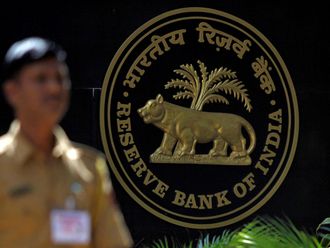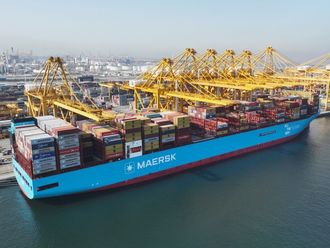Last week, Reliance Industries Limited (RIL) was in the news after allegations that it had benefitted from years of cosy relationships with the government of the day, particularly in its oil and gas ventures off the Andhra coast (KG-D6 basin). Reliance chairman Mukesh Ambani, however, denied the charges.
But, last Thursday, after the charges were leveled against the company, Reliance shares fell more than 2 per cent in early trading, only to recover and end the session up 0.20 per cent. While for the last year, the RIL stock is down 5.71 per cent, its year-to-date performance has seen the share price up 14.17 per cent. However, this has not been enough to stop Reliance from ceding its position—which it had held continuously for a number of years—as the largest company by market capitalization on the Indian exchange.
Where’s the stock headed and can it once again become the darling of the retail investor community? Analysts differ.
Financial health:
For the fourth consecutive quarter last month, Reliance Industries saw a drop in its year-on-year profits, which fell 5.7 per cent to Rs.53.8 billion. However, over the previous quarter, profits jumped by 20 per cent, led by higher refining margins.
Profit after taxes (PAT) for the quarter were “largely” in line with the expectations of Motilal Oswal Securities.
But, another Indian brokerage, Kota Securities, wrote in its post earnings report on October 15, that the results were weaker than their “expected Rs54.7 billion”. Most attribute the decline in profits over the same period last year due to slow output in natural gas from the controversial Krishna Godavari basin and lower petro-chemical (petchem) margins.
The 14 per cent quarter-on-quarter increase of EBITDA (earnings before Interest, Taxes, Depreciation and Amortisation) to Rs77.1 billion was also lower than expectations of Rs82 billion (of Motilal) and Rs79.5 billion (of Kotak).
“This is because depreciation was lower than expected at Rs22.8b (versus the estimated Rs24.2b) and other income was higher at Rs 21.1b (versus the estimated Rs19.2b),” said Rikesh Parikh, vice president, market strategy and product development, equities, at Motilal.
The 14 per cent increase in EBITDA in the current quarter, over the previous one, reflects improved operating performance of the refining segment. But, RIL’s EBITDA and net income was down year-on-year, led by a sharp decline in oil and gas production and lower petrochemical margins. While Kotak believes that it is “perhaps the best quarterly profits of RIL for a while, the reported profits has also benefited from weak exchange rate (`55.2/US$) and low tax rate (21%).”
Looking ahead, Kotak is less upbeat on the sector’s prospects as a whole. It believes Reliance’s core businesses will remain subdued.
“We see downside risks to refining margins and rule out meaningful improvement in petrochemical business over next 12 to 18 months given weakness in downstream demand, which is further exacerbated by slowdown in China and Euro-zone, and reasonable capacity additions, which will outpace the growth in demand.”
The company is also waiting for various government approvals, a major reason for its “go slow” approach on production.
“Nothing seems to have changed on the exploration and production (E&P) approval front since the last quarter as RIL continues to await government approvals for its development projects. Further, overhang continues in arbitration on cost recovery in KG-D6,” according to Parikh in their report after the second quarter earnings results.
“However, it should be noted that post the government approvals, it will take 3 to 4 years to develop new fields,” he added.
Gaurang Shah, assistant vice president and head of equities at Geojit BNP Paribas Financial Services said: “We need to see the GRM (gross refining margins) and petro-chemical (petchem) margins for the coming quarters generating incremental income. The increase in earnings will depend on the output ramp up which for now is very sluggish due to various reasons. There has been news of RIL selling overseas assets [and we will have to see] how much funds are generated.”
Shah added: “The review of the gas price is not expected before 2014. This was made clear by the new oil minister, Veerappa Moily. However if there is some improvement in the relations between the [oil ministry] and RIL, then one can expect some relief for which RIL will have to increase output.”
On the positive side, Motilal Oswal’s Parikh believes shale gas volumes looks encouraging. According to the Motilal Oswal October report: “The management continues to guide shale gas production growth of 50% CAGR over the next three years. RIL’s share of shale gas production grew 30% quarter-on-quarter and revenues and EBITDA stood at USD119m and USD102m; while cumulative investment stands at USD4.8b.”
Dividend:
Reliance has consistently paid dividends over the last five years, which for many retail investors is a reason to hold onto the stock. For the last financial year, the company declared an equity dividend of 85%, the equivalent to Rs 8.5 per share. At last Thursday’s (before close) price of Rs807, this dividend yield is equivalent to 1.05%.
However, Shah of Geojit BNP Paribas notes that one can’t be sure that dividend payout will be every year and at the same rate-after all, it depends on the performance and profitability of the company.
“If an investor is absolutely risk averse and is not in a hurry to get a return, then one may consider RIL,” he added. “We feel that the down side from current level is very limited on the share price and hope that the performance is good enough to pay out dividend.”
Valuations:
According to Kotak analysts, valuations are expensive at 11.3 times annualized second quarter (of this financial year) earnings per share.
Rikesh Parikh agrees. “Major contributor to RIL profitability has been Refining margin which are cyclical in nature. Hence valuation is expensive. Also we don’t see any new business where company has invested contributing meaningfully over next three-year period.”
JARGON BUSTER:
SOTP: (Sum of the parts) analysis: Valuing a company by determining what its divisions would be worth if it was broken up and spun off or acquired by another company.
Source: Investopedia.com












